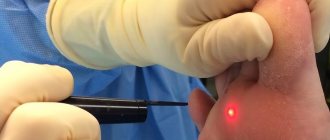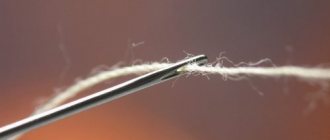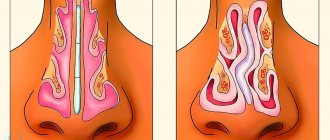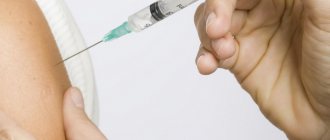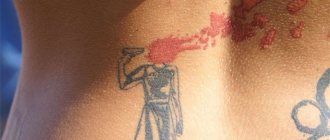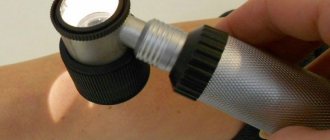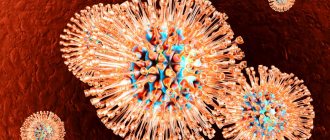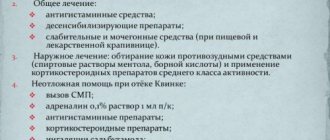July 1, 2021
Warts bother many people and are associated with dirt and uncleanliness. Some people still believe that warts appear because a person touched a toad. And for what reasons do these tumors actually appear? In this article, we will look at why warts appear and also look at their types.
What is a subungual wart?
A subungual wart is a benign neoplasm that appears on the leg, arm, and specifically under the nail plate. The cause of its occurrence is the second strain of human papillomavirus.
Subungual warts are benign formations under the nail plate. Cause: human papillomavirus, activated by immunodeficiencies of various natures.
Diagnostics: examination, biopsy, PCR.
Treatment: removal using electrocoagulation, laser therapy, cryotherapy, scalpel; sometimes they get by with the prescription of keratolytics, local necrotizing drugs, and cryodestruction.
The surface of these growths is rough, the shape is spherical or flat, and the color is in most cases gray. Only sometimes there are bodily periungual and subungual warts.
Despite the fact that these new growths are localized on the surface, under certain conditions their roots grow far into the depths. Getting rid of such growths is much more difficult.
Warts that appear on the arms and legs are considered harmless due to the fact that they do not cause discomfort or pain. However, when they are damaged, various infections easily enter the body.
In childhood, the appearance of periungual warts may be associated with frequent trauma to this area.
Young children often injure their fingers in the sandbox or on the playground.If a single wart appears, dynamic observation is recommended. As a rule, they disappear on their own as the child grows older.
Cosmetologist, dermatologist, trichologist
Kalinina Olga Alexandrovna
4 years of experience
Subungual and periungual warts are not only an aesthetic defect. The condition of the nails gradually deteriorates, and over time the nail plates become deformed, become brittle and crumble. That is why treatment must be started as early as possible.
The danger of periungual warts
Being benign neoplasms, subungual warts usually present more of an aesthetic than a physiological problem. However, prolonged absence of therapy can lead to the following unpleasant consequences:
- Damage or complete destruction of the nail plate;
- Mechanical injury to the body of the neoplasm, which is accompanied by bleeding and an increased risk of infection of the wound surface;
- The likelihood of further growth and spread of the defect.
Isolated cases of transformation of warts into a precancerous or oncological condition of the skin have also been recorded. In order to avoid undesirable consequences and risks, you should promptly seek medical advice from a qualified specialist.
Causes
The human papillomavirus is the main cause of warts under and around the nail. It is transmitted through direct contact with an infected person and through the use of his personal belongings.
But even after the virus enters the body, growths may not appear at all. HPV remains in a latent state for a long time.
The transition of the virus to the active phase can be triggered by the following factors:
- suppression of the immune system;
- exposure to constant stress;
- hormonal imbalance;
- exacerbation of concomitant chronic diseases;
- failure to comply with basic rules of personal hygiene.
Removing warts with nitrogen
Cryodestruction is a method of removing warts by exposing them to liquid nitrogen.
In addition, even minor damage in the area around the nails can precede the formation of growths. At high risk are people who are forced to frequently come into contact with water and household chemicals without protective gloves.
The danger can be posed by careless cuticle removal and excessive sweating, as well as the habit of biting nails. In patients in these categories, the virus spreads much faster, and the clinical picture is more pronounced.
Reasons for appearance
Some statistics: 7 out of 10 people are infected with the human papillomavirus (HPV) to one degree or another.
HPV lives and does not manifest itself until a decrease in immunity occurs; it causes significant harm and deprives us of a full, happy life when it manifests itself in the form of growths. And the first signs of the presence of HPV in the body are WARTS and PAPILLOMAS. If papillomas are not treated, then the disease further develops and spreads throughout the body.
Expert opinion
Sakania Luiza Ruslanovna
Dermatovenerologist, cosmetologist, trichologist
Ask a Question
The appearance of warts is associated with a viral infection or with age-related changes in the skin. Among the types of keratinized growths on the skin located around or under the nail, simple and juvenile warts are the most active.
The first type of neoplasm has a dome-shaped shape with a dirty-brown surface, reminiscent of the upper part of a cauliflower inflorescence. Small individual growths can gradually merge and form large lumpy nodules.
Juvenile warts are distinguished by flat, rounded nodules of a grayish-yellowish hue, which are often grouped along abrasions or cuts.
The main reasons for the appearance and activation of warty skin growths include several groups of factors:
- direct contact with a carrier of human papillomatous virus;
- infection through household items (towel or bed linen) and various surfaces (handrails in transport and others), especially in the presence of microtraumas on the skin;
- prolonged stressful situations;
- weakened immunity;
- the presence of chronic diseases, especially with frequent exacerbations.
Types of warts
In most cases, the following types of warts are diagnosed on the skin of the feet and palms, in the area of the fingers, near and under the nails:
- vulgar (simple) - have a rough surface, round or spherical shape. Their size does not exceed one centimeter. Distinctive features are the multiple nature and localization mainly on the dorsum of the arms and legs;
- flat - this type of neoplasm is quite rare (in about 4 out of 100 cases) and is a formation slightly raised above the skin, having a flat top, and most often an irregular shape. A distinctive feature is the absence of excessive keratinization, which ensures the smoothness and shine of the surface of the wart. Usually a flat wart forms on the back of the hands, in most cases there are several of them;
- plantar - this term rather refers to the location of the tumor. A plantar wart is a wart located on the surface of the foot. These are very painful neoplasms because they are constantly under stress when walking. Warts can spread to the fingers and the periungual area of the skin of the feet.
- periungual - neoplasms that develop on the toe or hand, near and under the nails. The growths may be superficial or have a root located deep under the nail.
Warts under fingernails
The formation of subungual warts on the hands is possible under certain conditions:
- presence of burrs;
- damage to the cuticle, including during the process of performing a manicure with a poorly disinfected instrument;
- cuts near the nail plate;
- habit of biting nails.
Mechanical irritation or exposure to household chemicals causes damage to overgrown skin with the appearance of small bleeding and very painful cracks that promote infection.
Warts under toenails
Toenails become affected by warts for several reasons:
- the presence of small abrasions on the toes associated with uncomfortable shoes;
- ingrown toenail with damage to the surrounding skin;
- using the slippers of an infected person;
- visiting a swimming pool with insufficient sanitary treatment of water and surfaces;
- being on the beach without special shoes.
The growth of a subungual wart on the foot can not only cause pain, but with significant progression makes it impossible to wear usual shoes and makes it difficult for the patient to move independently.
Symptoms and types
Depending on the location, nail growths are divided into two types:
Periungual
Appear on the skin near the nail plate. At the initial stage of its development, the formation of a small growth of flesh-colored or gray color with a rough surface is noted.
Most often, these neoplasms have a flat surface, but in some cases they can be elevated. Warts are similar to calluses, but their surface is looser. Due to systematic damage, the growths acquire a brown or red color;
Subungual
They are localized directly under the nail plate itself and do not manifest themselves in any way for a long period. Visually, the seals are pinkish or flesh-colored growths of a rounded shape.
As they grow, they lift the nail plate and thereby deform it. The appearance of transverse and longitudinal stripes on the nail is also noted, it becomes depleted and becomes brittle.
A distinctive feature of subungual warts from other types is discomfort and pain, which intensify as the tumor increases in size. If the growth is localized on the leg, the patient cannot wear usual shoes, since the wart is injured and inflamed, and as a result, bacteria enter the body.
Why can our articles be trusted?
We make health information clear, accessible and relevant.
- All articles are checked by practicing doctors.
- We take scientific literature and the latest research as a basis.
- We publish detailed articles that answer all questions.
When the growths become inflamed, their intensive growth and fusion are noted. Often the development of such neoplasms is accompanied by a fungal infection.
Methods for treating warts under the fingernail
Practice shows that in 50% of cases in children and adolescents, a wart under the fingernail goes away on its own. This percentage cannot be called sufficient to ignore the problem and hope for its independent solution. If, over time, the warts do not go away, but, on the contrary, begin to grow, then the likelihood of complications increases. Worsening of the disease leads to complete destruction of the nail, as well as the formation of cracks and wounds on the warts, which are fraught with secondary inflammation. In order to prevent the development of complications, as well as the spread of the disease, it is necessary to use all means available for the treatment of warts around the fingernails - medications, procedures, folk remedies.
Medicines for warts under the fingernail
In the photo there are preparations for warts under the fingernail
A visit to a dermatologist will allow you to develop a detailed plan for how to get rid of a wart under your fingernail; to do this, you must first remove the affected part of the nail plate, and then manipulate the formation.
A wart on the fingernail can be easily removed with pharmaceutical preparations at home:
- Antiviral ointments , in particular Oksolinova or Panavir. Oksolin in Ukraine can be purchased for only 29 hryvnia, and in Russia - for 11 rubles, while the ointment has a general antiviral effect and can be used not only for warts on the hands near the nails.
- Agents that act on the protein of destructive cells , the so-called keratolytics - Salipod, Collomac. A bottle of 10 ml Collomac solution costs 306 rubles in Russia, and from 300 hryvnia in Ukraine. This volume is quite enough to remove the existing growth and those that will appear in the future.
- Preparations with an aggressive chemical composition leading to tissue necrosis - Solcoderm, Condyline. Solcoderm is sold in the form of a solution, which should be applied pointwise to the destructive formation. The skin next to the formation is treated with Vaseline to prevent chemical burns. In Ukraine, Solcoderm will cost 450 hryvnia, in Russia - 889 rubles. Other products may cost more depending on the manufacturer.
You need to understand that medications for the external destruction of warts around fingernails remove only pathogenic tissue, and not the cause that caused them. The human papillomavirus cannot be removed from the body, but with the help of medications it will be possible to stop it. For this purpose, a number of drugs are prescribed: antiviral (Acic, Isoprinosine), immunomodulating and immunostimulating (Cycloferon, Lavomax and others). Such a first aid kit for a patient will cost a total of several hundred hryvnias and up to 2000 rubles. There are also medications that are much more expensive, but the decision on their use should be made solely by the doctor.
Removing warts under the fingernail
Warts on fingernails can be removed using hardware methods:
- Laser . This is how the build-up is removed layer by layer. Despite the fact that the operation is performed with the most modern technologies, pain may occur, so it is performed under local anesthesia. The procedure costs up to 150 hryvnia in Ukraine for the removal of one formation and 300 rubles in Russia, while the likelihood of relapse is extremely low.
- Liquid nitrogen . In this way, large formations are affected; destructive tissues die from low temperatures. The procedure will cost 250 hryvnia in Ukraine, and 700 rubles in Russia.
- Electric shock . This way, even a group of formations can be removed, but the procedure will cost 150 Ukrainian hryvnia or 300 rubles in Russia. The procedure is quite painful, but warts near the fingernail will not appear again. See contraindications for performing electrocoagulation of papillomas.
- With a scalpel . The surgical method removes warts that have grown deep under the nail plate; recovery after the procedure is quite lengthy, but there is no guarantee of no relapses.
The destruction method is selected individually after consultation with a specialist.
The result of the procedure is the return of the aesthetic appeal of the hands, that is, we are talking about the cosmetic side, but this does not mean that you should trust non-professionals. Any manipulations with warts on fingernails should be carried out in specialized medical institutions.
Folk remedies for warts under the fingernail
Treatment with folk remedies is permissible only in cases where a wart has begun to develop near the fingernail, without affecting the plate. As soon as a second formation begins to appear or another finger becomes infected, treatment with alternative medicine methods should be stopped and consult a doctor.
To remove single warts from the fingernail, the following folk remedies are used:
- Wraps made from a mixture of vinegar and flour - the ingredients must be taken in such a proportion that a thick paste is obtained; this composition is applied to the wart and left overnight.
- Compresses made from ground garlic, the composition must be applied freshly, applied strictly to the pathogenic area, fixing with a band-aid. To increase the shelf life of the product, you can mix garlic pulp with Vaseline and store it in the refrigerator.
- Onion compresses (before starting treatment, soak the onion in 9% vinegar).
- Tinctures from celandine root (you can use pharmaceutical preparations based on it) are applied twice a day until the wart near the fingernail is completely reduced.
Before starting self-treatment, it is recommended to consult a doctor.
Note! In order to facilitate access to the wart around the fingernail, you should take care of the manicure - cut off the free edge of the nail and file the nail plate. For hygiene procedures, you should use individual manicure sets to avoid infecting your loved ones.
- Read more about how to remove warts on hands with celandine
Diagnostics
An experienced doctor is able to distinguish a subungual or periungual wart from other neoplasms during the first visual examination. Despite this, a number of additional studies are most often carried out:
- Dermatoscopy - the growth is examined at multiple magnification.
- Biopsy - a sample is taken from the affected area and sent for histological examination. Thanks to this, it is possible to obtain information about whether the growth is malignant.
- Prc diagnostics - it is used to determine the HPV strain and the number of virus particles in the body.
Only after making an accurate diagnosis does a specialist prescribe a course of treatment. Therapeutic measures largely depend on the type of papillomavirus and the degree of risk of the growth degenerating into a malignant tumor.
Treatment
A wart, regardless of location, is a benign formation that extremely rarely mutates into melanoma. If it does not cause discomfort and does not spoil the aesthetic appearance, then no therapeutic measures are taken. Treatment is necessary in the following cases:
Self-medication is dangerous with complications!
Attention
Despite the fact that our articles are based on trusted sources and have been tested by practicing doctors, the same symptoms can be signs of different diseases, and the disease may not proceed according to the textbook.
Pros of seeing a doctor:
- Only a specialist will prescribe suitable medications.
- Recovery will be easier and faster.
- The doctor will monitor the course of the disease and help avoid complications.
find a doctor
Do not try to treat yourself - consult a specialist.
- the boundaries of the growth become blurred;
- an increase in the number of neoplasms;
- modification of the wart (color or shape);
- bleeding;
- itching or pain.
There are several methods for removing warts.
Electrocoagulation
Pathological tissues are cauterized under the influence of alternating current. For this purpose, an electrode is used that is heated to a high temperature. Due to protein coagulation, the growth dies. After a short time, the skin at the site of the tumor is restored.
This method also has a number of contraindications, including active herpes, exacerbation of chronic diseases, cancer and all inflammatory processes.
Laser therapy
In this case, the pathological tissues are evaporated, and due to the instant sealing of the vessels, the risk of bleeding is completely eliminated.
The area of epithelium treated with laser quickly regenerates, and scars do not form. It is highly not recommended to remove growths using this method for patients suffering from diabetes, cancer and epilepsy.
The procedure is contraindicated for pregnant women and women during lactation, as well as in the presence of infectious and inflammatory diseases in the active stage.
Cryotherapy
Warts are frozen under the influence of liquid nitrogen. A bubble appears in the affected area, in the place of which the skin quickly recovers.
Large growths are removed in several sessions. The procedure is painful. That is why it is not used in the treatment of children. In addition, scar formation cannot be ruled out.
Excision with a scalpel
The operation is performed under local anesthesia. The method is used extremely rarely, only in cases where other therapeutic measures have failed and there is a suspicion that the growth has degenerated into a malignant tumor.
After this procedure, material remains for subsequent histological examination. There is a high chance of developing noticeable scars.
Drugs
In the early stages, warts can also be removed with the help of medications. The following groups of drugs are used:
- Keratolytics - the active ingredient in this case is salicylic or lactic acid, which helps dissolve keratinized areas of the epithelium.
- Preparations with local necrotizing effect.
- Antiviral local agents.
Among the effective means that can remove warts near and under nails are ointments, patches and solutions based on salicylic acid.
Therapy must necessarily include not only the use of external agents, but also the use of antiviral and immunostimulating drugs.
Any medications must be prescribed by the attending physician. Self-medication in this case is unacceptable. Warts can not only reappear, but also degenerate into a malignant formation. There is also a risk of secondary infection entering the body.
Types of warts
In shape, growths in children can be round, thread-like, oval or asymmetrical. Doctors distinguish several types of warts, which differ in color, size, and structure:
- Vulgar:
most often formed on the hands and can be either single or in the form of merging clusters. They look like small, towering growths with a rough surface and clear contours. - Palmoplantar:
Large growths on the soles or palms that resemble calluses. Usually they are single and grow deeply into the tissue, forming painful growths with a rigid structure. - Juvenile:
can occur on any part of the body. Their distinctive features are their uneven shape, smooth surface and rapid keratinization. - Pointed:
grow on the mucous membranes and look like rounded formations, similar to cauliflower.
Diagnostics
Before starting treatment for warts, the doctor performs an external examination of the child and determines the type of tumor. In some cases, the patient may be referred for a biopsy (if there is a suspicion of oncology) or for a PCR test (a method that detects the DNA of the HPV pathogen in a person’s blood). To clarify the diagnosis, dermatoscopy is performed.
Wart removal methods
Treatment of warts includes a set of measures aimed at suppressing the activity of the virus and safely removing growths. Viral warts are often accompanied by increased sweating. In such situations, additional therapy is prescribed to get rid of excessive sweating.
To remove warts in children, the safest and most painless methods are chosen:
- cryodestruction – helps remove growths by freezing them with liquid nitrogen;
- chemical destruction - performed by treating formations with alkali or acid (used only for children over 12 years old);
- electrocoagulation – exposure to electric current;
- radio wave method using the Surgitron apparatus - eliminates warts due to the action of radio waves;
- micropulse laser PinPointe FootLaser – eliminates skin formations using a laser beam.
Laser removal of warts in children
At the Podology Clinic, warts are removed from children using the unique and only laser device in Moscow, PinPointe FootLaser.
A micropulse laser cuts and seals the capillaries that feed the wart, it stops growing and after some time dries up and falls off. Laser therapy is an absolutely painless and effective method for removing skin tumors! Several sessions will allow you to get rid of small elements forever without burns or relapses; large ones will require at least 3-4 visits to the doctor. Our center employs qualified dermatologists who will painlessly remove any type of formation. An individual approach, the use of modern laser equipment, innovative treatment methods that are painless and safe – these are the advantages of the clinic that will effectively solve any dermatological problem in a child.
